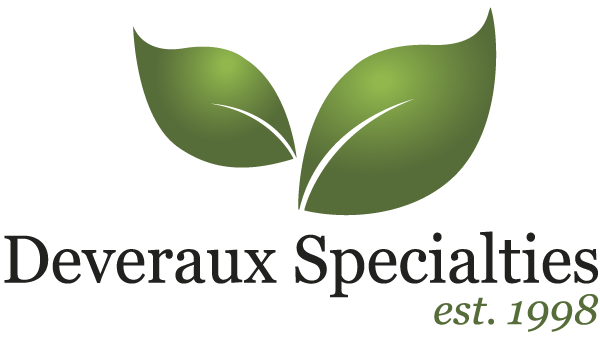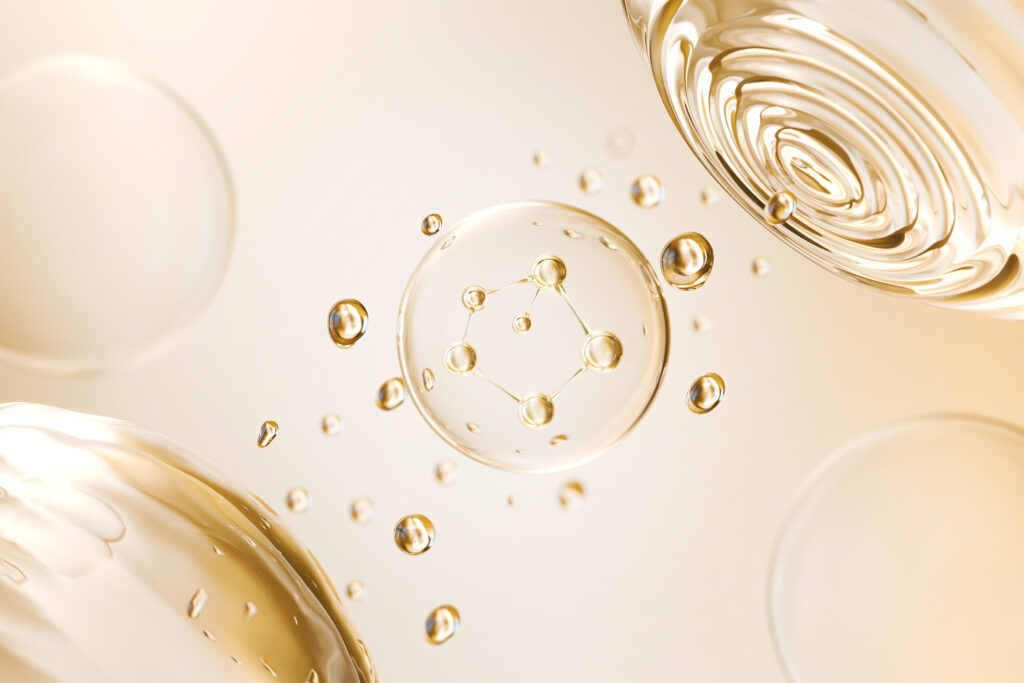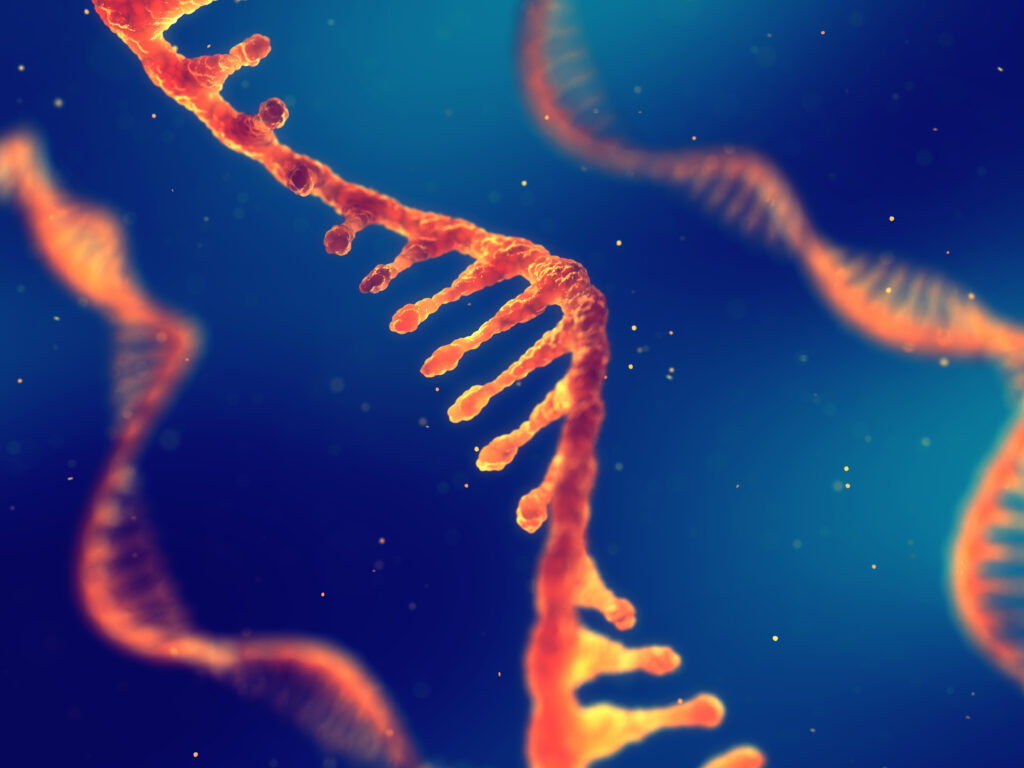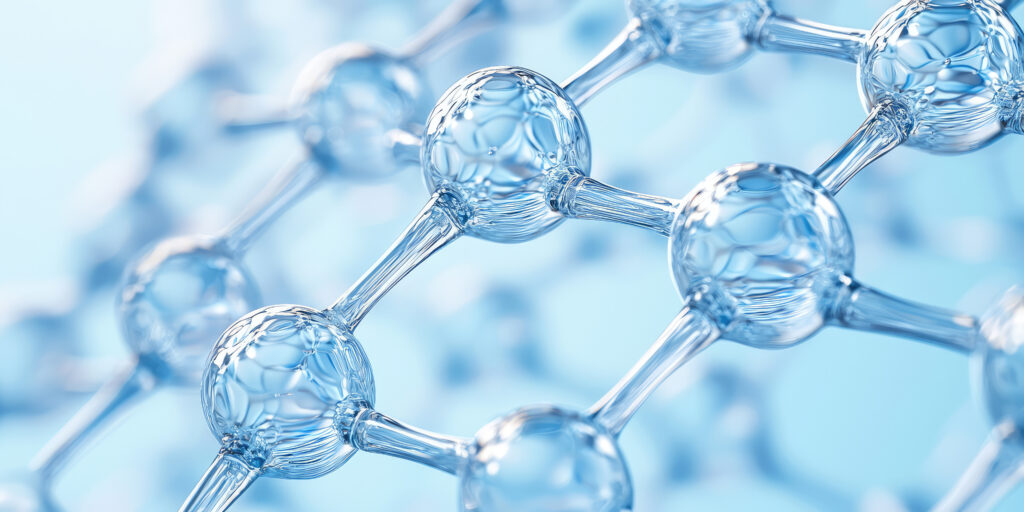When Lashes Become More Than Just Cosmetic
Scroll through any “Top‑Rated Lash Serum” list and a pattern emerges: exuberant before‑and‑after photos, peptide buzzwords, and promises of “drug‑free length in 30 days.” What’s often left unsaid is the uncomfortable reality that only a fraction of these formulas have been vetted in peer‑reviewed studies, and even fewer explain how their actives negotiate the unique biology of eyelash follicles. A 2024 systematic review confirmed the mismatch, pointing to a scarcity of hard mechanistic data and long‑term ocular‑safety evidence among commercially popular products¹ .
Formulating for eyelash growth isn’t just a niche interest anymore—it’s a fast-rising demand in both prestige and mass-market cosmetics. Most lash growth actives that show meaningful results—like prostaglandin analogs—carry regulatory baggage and safety concerns that make them difficult or even impossible to incorporate into modern clean-label formulations. Meanwhile, natural alternatives often lack robust clinical evidence, and traditional hair-growth actives like minoxidil perform inconsistently on lashes due to metabolic and anatomical differences.
The result is a formulation gap. One that Natura-Tec SeaRenew™ is now positioned to close—with new clinical data, a proven mechanism of action, and a clean INCI that aligns with today’s performance, safety, and sustainability standards.
Why Lash Growth Isn’t Like Scalp Care
► Biological tempo versus claim timelines
Eyelash follicles complete an anagen–catagen–telogen cycle in weeks, not years. Their growth phase averages just 3–4 weeks—compared with up to six years for scalp hair—leaving little room for slow‑acting actives¹ . Complicating matters, SULT1A1 sulfotransferase—the enzyme that bio‑activates topical minoxidil—is roughly tenfold lower in lash follicles than on the scalp, which helps explain why a gold‑standard hair‑growth drug falters when repurposed for lashes².

► Safety at the ocular interface
Prostaglandin analogs remain the gold standard for visible growth, but their side‑effect profile is expanding: peri‑orbital fat loss, iris hyper‑pigmentation, and even cases of pre‑septal cellulitis after lash‑lifting procedures³. Meanwhile, peptide‑based enhancers proliferate, yet many rest on single‑center studies with limited instrumentation and small cohorts³. For brands positioning themselves as “clean,” the regulatory and marketing risks of these approaches can outweigh the rewards.
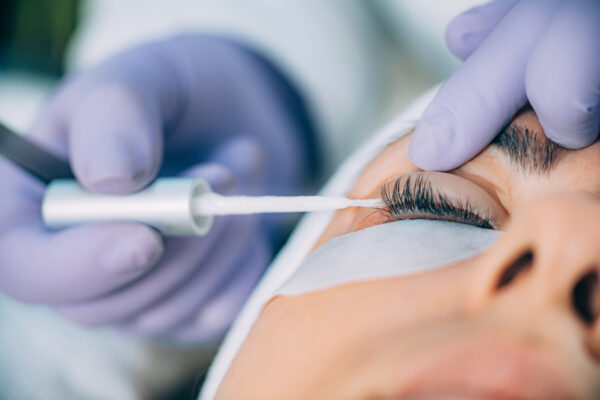
► A sustainability mandate that won’t wait
Formulators now juggle life‑cycle analyses, up‑cycled oils, and micro‑plastic restrictions. The lash category—long dominated by petro‑based mascaras and multi‑INCI serums—has become a surprising battleground for circular‑economy storytelling. Winning solutions must compress efficacy, safety, and eco‑credibility into a single, globally compliant ingredient.
SeaRenew™: Targeted Performance without Pharmaceutical Trade‑Offs
SeaRenew™ from Natura‑Tec tackles the problem at its biological source instead of trying to hack hormone pathways or enzyme deficiencies. The ingredient fuses sustainably sourced Sapote‑seed oil—rich in lupeol, omega‑9, and omega‑6—with a closed‑loop microalgal extract of Nannochloropsis oceanica, an unusually cholesterol‑rich botanical (> 70 % of total sterols)⁴. Lupeol accelerates keratinocyte differentiation, while phyto‑cholesterol reinforces follicular membrane fluidity and sebum composition—both decisive factors for lash vitality.
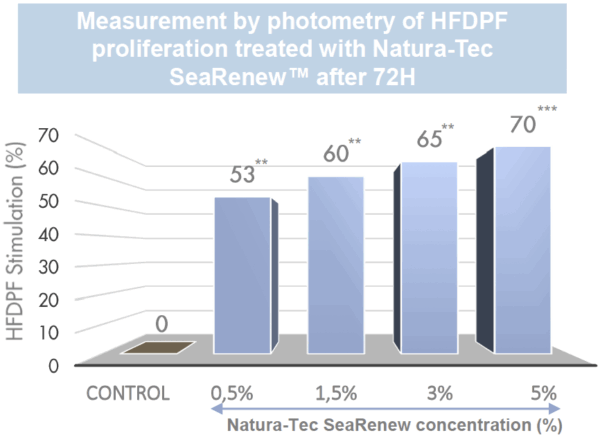
Crucially, SeaRenew™ modulates the dermal papilla rather than forcing vasodilation or prostaglandin signaling. In vitro, human follicle dermal papilla fibroblast (HFDPF) proliferation climbs 53 % at 0.5 % inclusion and reaches 70 % at 5 % after 72 hours⁴. Those values are not mere Petri‑dish trivia; they translate directly into a lengthened anagen phase and a thicker mini‑hair matrix in vivo.
Quantifying Growth: SeaRenew™’s Efficacy Profile
► In Vivo Efficacy Data for Eyelashes
Formulators don’t just need claims—they need numbers. And the in-vivo data behind SeaRenew™ does not disappoint.
In a five-month clinical trial on hair, a leave-in serum with 3% SeaRenew™ achieved:
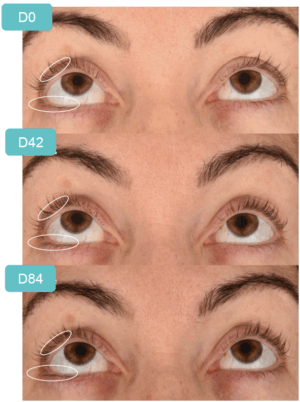
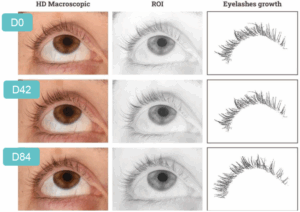
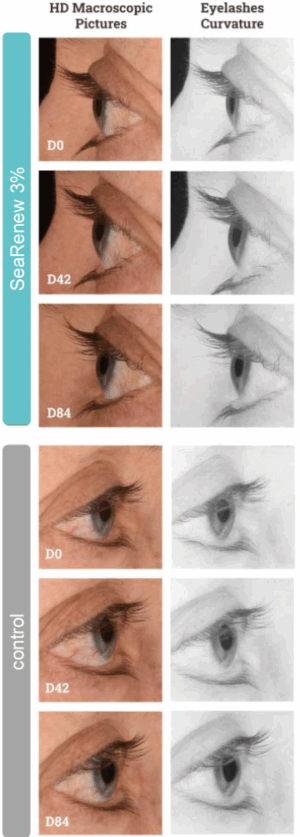
These results confirm that SeaRenew™ not only increases the count and length of lashes but also enhances curvature—a dual benefit improving both protective function and aesthetic appeal. Notably, some studies comparing control (untreated eye) versus treated eye observed similar magnitudes of improvement (e.g., number +13.1%, length +9.8%, volume +9.9% after 12 weeks) . Such consistency across studies strengthens confidence in reproducibility. Importantly, early signs of improvement may be evident as soon as 6 weeks, aligning with consumer expectations for timely results.
► In Vitro and Hair Data Reinforcing Mechanism
Beyond eyelash-specific data, hair-focused studies demonstrate SeaRenew™’s capacity to extend anagen and reduce telogen proportions in scalp hair: after 150 days with 3% SeaRenew™ serum, hair density increased by up to 10%, hair loss decreased by up to 45%, anagen-phase hairs rose by 20%, and telogen-phase hairs dropped by 55%. While scalp data cannot be directly extrapolated to eyelashes (given cycle differences), they underscore the active’s potency on follicular biology and dermal papilla stimulation, supporting the mechanistic rationale for eyelash efficacy.
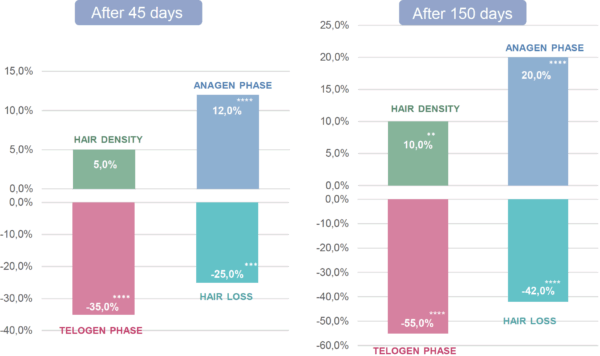
► Comparison with Other Actives and Formulation Considerations
In comparison to prostaglandin analogs (e.g., bimatoprost), SeaRenew™ offers a safer profile without risks of iris pigmentation or dryness. Unlike extension or tint approaches that may provoke contact dermatitis, SeaRenew™ relies on natural, well-tolerated extracts with minimal irritancy. From a formulation perspective, SeaRenew™’s oil-based nature necessitates emulsification strategies but also contributes nourishing lipids beneficial to lash follicles. Preservative selection should account for compatibility with lipids and ocular tolerance; formulators may choose mild, broad-spectrum preservatives validated for periocular use.
Eyelash serums often include additional functional excipients—humectants, film-formers, peptides—that could complement SeaRenew™. However, formulators should prioritize maintaining active concentration (e.g., 2–4%) and ensuring overall formulation pH and osmolarity are appropriate for ocular contact. Stability studies under accelerated conditions, plus photostability testing if packaging is clear, will safeguard product integrity. Packaging choices—precision applicators, opaque or UV-protective containers—further ensure active potency and hygiene.
► Potential for Multifunctional Applications
Given SeaRenew™’s dual efficacy on hair and eyelashes, formulators can explore multifunctional products: lash serums that also support brow health, or haircare lines with added lash-boosting potential in makeup primers. The lipid-rich nature of SeaRenew™ may also contribute to hair fiber nourishment and scalp barrier support. This versatility aligns with minimalism-focused trends: delivering multiple benefits in fewer products, streamlining consumer routines. Moreover, sustainability credentials of microalgae cultivation resonate with eco-conscious consumers and brands embracing responsible sourcing.
Shaping Next-Gen Eyelash Growth Formulations
The future of hair and eyelash care hinges not on hype, but on science. Natura-Tec SeaRenew™ is a method grounded in clinical results, powered by microalgae biotechnology, and designed with the modern formulator in mind.
As consumer expectations evolve toward cleaner, multi-benefit formulations, SeaRenew™ offers not only compliance with these values—but an opportunity to lead. Whether you’re designing the next breakthrough brow serum or an all-in-one hair and lash elixir, this active deserves a place in your bench trials.
Ready to design for visible results in a single lash cycle? Contact Deveraux Specialties today to request a sample, formulation guide, or technical presentation. Our team is here to support your next-generation development—from root to tip.
Resources:
- Baiyasi M., St. Claire K., Hengy M., Tur K., Fahs F., Potts G. Eyelash Serums: A Comprehensive Review. Journal of Cosmetic Dermatology. 2024. https://doi.org/10.1111/jocd.16278
- Fernandez-Gonzalez P., Truchuelo-Díez M.T., Gómez-Sánchez M.J. Open clinical trial evaluating the efficacy of a novel eyelash growth enhancer with peptides and glycosaminoglycans. J Cosmet Dermatol. 2024;23:2170–2180. https://pubmed.ncbi.nlm.nih.gov/38572527/
- Mehta N., Goren A. Comparison of minoxidil sulfotransferase activity between scalp hair, eyebrows, and eyelashes: Implication for minoxidil efficacy for off-label use. J Cosmet Dermatol. 2024;23:2757–2758. https://onlinelibrary.wiley.com/doi/10.1111/jocd.16322
- Natura-Tec. SeaRenew™ Technical Documentation: PDS, EDS, In Vivo & In Vitro Reports. 2025. www.natura-tec.com
